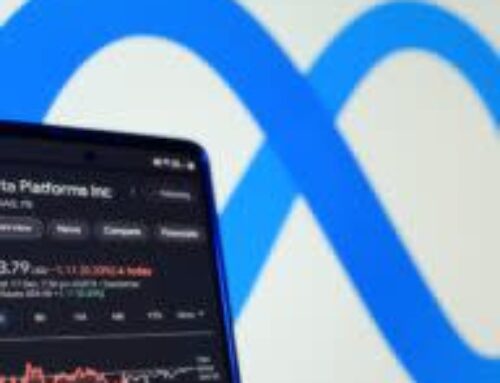Fink: Expand Access to Private Markets to Democratize Investing
March 31, 2025
In his much-anticipated annual letter to shareholders released on March 31, 2025, BlackRock CEO Laurence Fink emphasized the importance of expanding access to private markets—such as private equity, credit, and infrastructure—for everyday investors, including those saving in 401(k) plans.

The leader of the world’s largest money manager argued that traditional portfolios relying solely on public markets may not deliver sufficient long-term returns, especially given longer lifespans and rising retirement needs. Fink called for democratizing private market investing to help more Americans build wealth and improve retirement security, positioning it as a key step in addressing economic inequality and modernizing retirement strategies.
At the top of this year’s lengthy letter, Fink underlined a foundational principle driving BlackRock’s business: that capital markets can help more people experience the growth and prosperity that capitalism can create.
“Capitalism did work—just for too few people,” Fink said. “The solution isn’t to abandon markets; it’s to expand them… More investment. More investors. That’s the answer.”
He argued that while capitalism has generated unprecedented wealth, its benefits have not been evenly distributed, leaving many individuals behind. By democratizing access to private markets, Fink believes more investors can participate in economic growth and enhance their retirement outcomes. He aims to let more people own a meaningful stake in the growth happening around them by helping current investors access parts of the market they’ve previously been restricted from, which would in turn enable more people to become investors in the first place.
The majority of the staggering $11.6 trillion in assets that BlackRock manages are retirement savings, making it the company’s core business.
“If we really want to democratize investing, retirement is where the conversation has to start.”
Larry Fink
“For most people, retirement accounts are their first—and often their only—experience with investing. So, if we really want to democratize investing, retirement is where the conversation has to start,” he said.
Fink’s letter outlines ideas such as helping people start investing earlier and giving retirees the peace of mind and security to spend in retirement.
“That’s what an economic democracy could look like: a country where everybody has a new avenue—investing—to pursue happiness and financial freedom,” Fink wrote.
He notes that a third of the country has no retirement savings at all. “No pensions, no 401(k)—nothing.”
At the same time, life expectancy is expanding. While he calls that an “incredible blessing,” it also underscores something frustrating: “We’re great at extending people’s lives, yet we hardly spend any effort helping them afford those extra years.”
One way to do this? By integrating diverse asset classes, including private market investments, into retirement portfolios to potentially improve returns and mitigate risks associated with longer retirement periods.
“A good retirement system provides a safety net to catch people when they fall. But a great system also offers a ladder—a way to grow savings, compounding wealth year after year. That’s where the U.S. falls short,” Fink wrote. “Right now, the country focuses heavily on preventing people from hitting the floor, as we should. But the U.S. needs to put just as much effort into helping people climb to the ceiling—through investing.”
When BlackRock hosted a retirement summit in March, Fink said there was a consensus around practical ideas to help more Americans start investing, grow their savings and confidently spend down what they saved.
But millions have trouble getting started with investing. Fink said there are three ways to start addressing this key issue.
• “First, expand emergency savings,” Fink wrote. “No one invests for retirement if they’re worried about paying for a flat tire or ER visit tomorrow. Yet that’s the reality for one-third of U.S. voters who say they couldn’t handle an unexpected $500 expense.”
He continued to say that people with dedicated rainy-day funds are much more likely to invest for retirement, and noted that SECURE 2.0 allows workers to save up to $2,500 in emergency accounts linked to retirement plans, including employer matching and easy withdrawals.
“But it’s just a start,” he wrote. “We can simplify the rules further, raise contribution limits, and enable automatic enrollment in standalone emergency accounts.”
• “Second, close the small business 401(k) gap,” he wrote. “Half of Americans work for small businesses, yet nearly half those businesses offer no retirement plan. This is fixable. States experimenting with incentives have driven up 401(k) adoption and employee savings. Policymakers can lean in more here, helping small businesses offer plans and auto-enroll workers.”
• “Third, help people start investing earlier,” he wrote. “At our retirement summit, Senators Cory Booker (D-NJ) and Todd Young (R-IN) talked about a market-based spin on ‘baby bonds.’ The idea would be to open an investment account for every American child on the day they’re born. Senator Booker mentioned it could be seeded by redirecting a fraction of existing tax breaks that mostly benefit the wealthy. It’s an interesting concept. Even a small amount could compound into a very large portfolio over a lifetime.”
Fink noted that many state and federal policymakers have proposed versions of this plan over the years, and he thinks it’s an idea worth revisiting. “The real payoff isn’t just financial—it’s foundational. When people own a piece of the economy, they don’t just benefit from growth; they believe in it. Ownership creates connection. It turns passive observers into participants.”
As the global financial system continues to evolve, Fink said the classic 60/40 stocks/bonds portfolio may no longer fully represent true diversification.
“The future standard portfolio may look more like 50/30/20—stocks, bonds, and private assets like real estate, infrastructure, and private credit.”
Larry Fink
“The future standard portfolio may look more like 50/30/20—stocks, bonds, and private assets like real estate, infrastructure, and private credit,” Fink wrote. “The appeal is clear. While these private assets may carry greater risk, they also provide great benefits.”
Private assets can lift returns and protect investors during market downturns. “Pension funds have invested in these assets for decades, but 401(k)s haven’t. It’s one reason why pensions typically outperform 401(k)s by about 0.5% each year,” Fink wrote.
BlackRock estimates that over 40 years, an extra 0.5% in annual returns results in 14.5% more money in a 401(k)—enough to fund 9 more years of retirement.
Fink did say there are formidable challenges with crafting a 50/30/20 portfolio. “For one, the industry isn’t structured for a 50/30/20 world. It’s largely split between traditional asset managers focused strictly on the 50/30 (stocks and bonds) and specialized private market firms dominating the 20 (private assets).”
Second, “bridging the divide between the 50/30 and the 20 is almost impossible for most individuals,” Fink wrote. “Even those who can afford it face another diversification problem within that 20%. Often, they barely have enough capital to meet the minimum for just one private fund—and having 20% of your portfolio locked up in a single fund isn’t really diversified.”
He said BlackRock can help investors get to a better outcome. “The divide between public and private markets is a tough problem—but it’s solvable.”
“We need to make it clear: Private assets are legal in retirement accounts.”
Larry Fink
If private assets perform so well, Fink rhetorically asked “why aren’t they in your 401(k)?” One major reason is that it’s unfamiliar territory for the 401(k) providers who select the investments offered in a plan. He said that while BlackRock is working to make the markets for these assets more price-transparent and liquid, many 401(k) providers haven’t yet adapted to this evolving financial landscape. “Including assets like real estate or infrastructure in a 401(k) has become practical only within the past 5 to 10 years.”
He said asset managers, private-market specialists, consultants, and advisors all play a role in guiding 401(k) providers. “That’s part of the reason I’m writing this letter—to cut through the fog. We need to make it clear: Private assets are legal in retirement accounts. They’re beneficial. And they’re becoming increasingly transparent,” Fink wrote.
He added that target date funds are a great place to start thanks to their simplicity. “That simplicity makes target date funds ideal for introducing private assets. The usual barriers for 401(k) providers—like daily valuations or immediate liquidity—matter far less when you’re investing over several decades,” Fink wrote.
Read Larry Fink’s 2025 Annual Chairman’s Letter to Investors in its entirety here.
SEE ALSO:
• ‘2025 National Retirement Summit’ Coming March 12 from BlackRock, Bipartisan Policy Center
• BlackRock’s LifePath Paycheck Caps 2024 with $16B
• BlackRock’s Fink Touts April Launch of ‘LifePath Paycheck’ TDF Strategy in Letter to Investors
Brian Anderson
Editor-in-Chief at 401(k) Specialist | banderson@401kspecialist.com | + postsBio ⮌
Veteran financial services industry journalist Brian Anderson joined 401(k) Specialist as Managing Editor in January 2019. He has led editorial content for a variety of well-known properties including Insurance Forums, Life Insurance Selling, National Underwriter Life & Health, and Senior Market Advisor. He has always maintained a focus on providing readers with timely, useful information intended to help them build their business.
Search
RECENT PRESS RELEASES
Related Post





